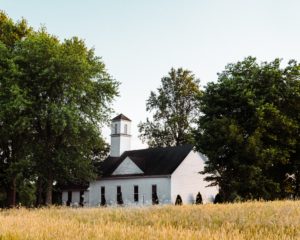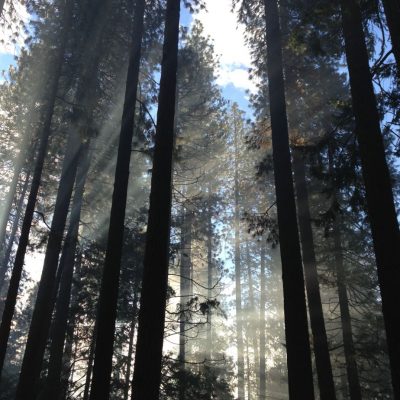Restoration is an activity that everyone can get behind, but it has special meaning for churches. It’s at the heart of the story we tell about God and it’s at the heart of the work we do.
by Anthony Siegrist
One of the places my family and I like to go on a Saturday is a nearby forest known as Forêt Larose. At 11,000 hectares (27,182 acres), this is one of the largest community-managed forests in Ontario. We enjoy the trails; skiing and snowshoeing them when there’s snow, hiking and biking them when there isn’t. What I appreciate most about this forest, though, is its story. In the nineteenth century, this part of the province was aggressively logged. Then it was farmed—or at least farming was attempted.
The sandy soil wasn’t productive and by the beginning of the twentieth century, the area became known locally as the Bourget Desert. In the 1920s, a local agricultural representative named Ferdinand Larose began a campaign to have the area replanted with trees. One of the goals was to create sustainable, local jobs. Today the place is forested well enough to draw hikers, mountain bikers, and hunters. On winter weekends, visitors can even hear the rowdy barks of sled dogs. And yes, the forest can now support some careful logging.
 Inspired by restoration
Inspired by restoration
This might be where my theological commitments come into play, but every time I move through this landscape, I find myself inspired by the evidence of restoration. Of course the work of the foresters hasn’t made the place exactly like it was 200 years ago. That’s not possible. But it is a lot better than it was 100 years ago. Forêt Larose has a tough history, but I find that makes the present reality even more gratifying.
Canada has lofty goals for stewarding its forests. As of the spring of 2019, the country had 11.8% of its land and fresh water under some kind of conservation arrangement. The government’s goal is to grow this number to 17% by 2020. This will involve more than public lands. It will include private holdings and Indigenous protected areas. In a country this big and this wild, we need ambitious goals and multiple actors.
Ethiopian church forests
However, as much as I appreciate that grand goal, I find myself most inspired by local conservation and restoration work. Over the past few years, several academic journals and even a few popular magazines have reported on the church forests of Ethiopia. There are something like 35,000 church forests in that country. They aren’t large—about five hectares (12.3 acres) on average. At the center of each of these little forests is a church, a part of the Ethiopian Orthodox Tewahedo Church. The surrounding forest is considered sacred space because of its proximity to the church. The most revered churches have the most lush tree cover.
Local communities use these church forests in a variety of ways. In a country where only about 5% of the land is now forested, these places also have biological significance. While forest cover has continued to recede across Ethiopia in the last several decades, these church forests have mostly been conserved. Researchers believe this conservation has more to do with the significance these places hold in the lives of local communities than with some grand government scheme.
I doubt that many of our North American churches are going to start surrounding themselves with forests, but some might. Wouldn’t it be wonderful if several decades from now, people could walk in small forests that had been conserved by local churches? Maybe the churches would have worked in partnership with other community organizations or maybe on their own. Even better, what if several decades from now, people could walk in landscapes restored by local churches? Restoration is an activity that everyone can get behind, but it has special meaning for churches. It’s at the heart of the story we tell about God and it’s at the heart of the work we do.
Anthony Siegrist is a pastor and theologian who serves at Ottawa Mennonite Church in Ontario. He is currently studying environmental sustainability during a sabbatical. Anthony coordinates the MCCN column, North of the Border, which features voices from Canada. His most recent book is, Speaking of God: An Essential Guide to Christian Thought.
Learn more
- Klepeis et. al. “Ethiopian Church Forests: A Hybrid Model of Protection,” Human Ecology 44 no. 6 (Dec. 2016): 715-730
- Abbott, “Biology Thrives in Ethiopia’s Church Forests,” Nature, Volume 575 Issue 7784, 28 November 2019
Church photo by Colin Maynard on Unsplash
